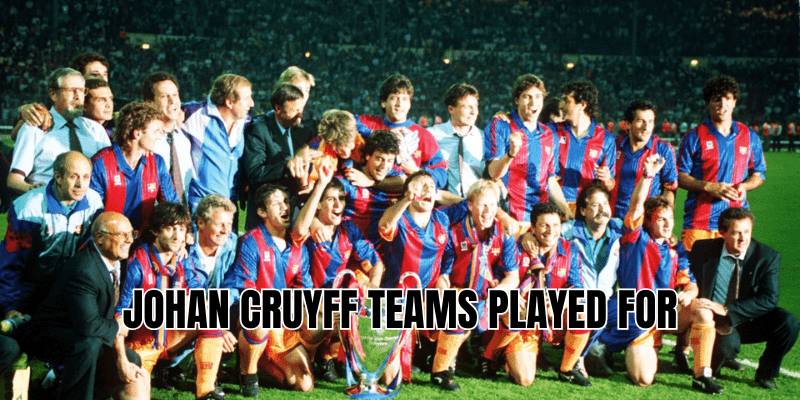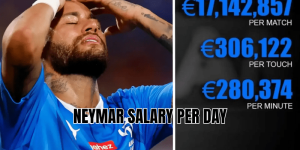In the pantheon of football legends, few names shine as brightly as Johan Cruyff. Whether you’re here for hard stats, fascinating anecdotes, or the story behind his moves, you’ll leave richer in knowledge—and with a dee.
Early years and Ajax youth breakthrough
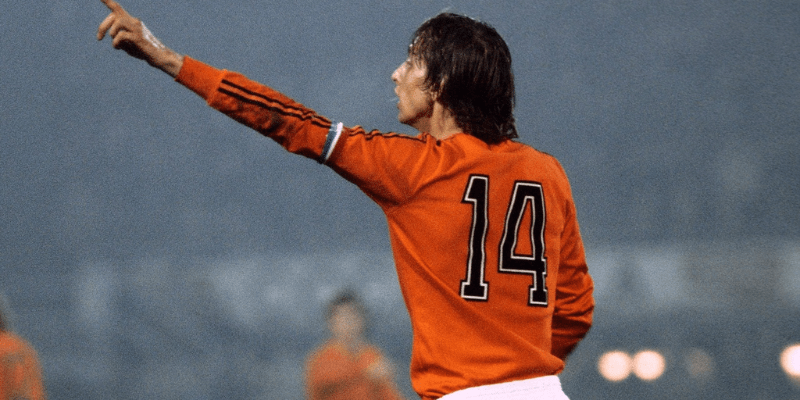
Johan Cruyff was born Hendrik Johannes Cruijff in April 1947 in Amsterdam. He joined Ajax’s youth system at age 10 in 1957, gradually rising through the ranks thanks to his exceptional technical ability, football IQ, and innate attraction to space and movement. (His youth period at Ajax is often cited.)
His first-team debut came in November 1964 in an Eredivisie match., Ajax became the cradle of Cruyff’s legend. He honed his skills under the influence of Rinus Michels and the Dutch “Total Football” philosophy, which demanded versatility, spatial awareness, and constant interchange of roles.
First spell at Ajax (1964–1973)
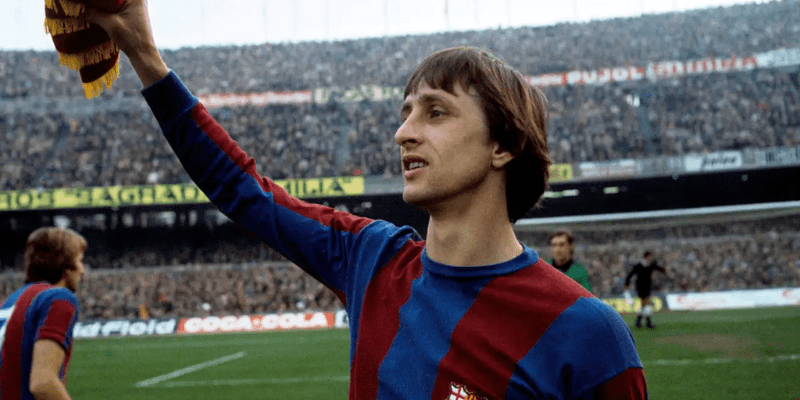
This period is where Cruyff built his reputation as one of the most devastating attackers in Europe. In his first stretch with Ajax, spanning 1964 to 1973:
- He made 245 league appearances and scored 193 league goals for Ajax in that span.
- In total competitions, he is often credited with well over 300 matches and 250+ goals during this era.
- While at Ajax, he won multiple Eredivisie titles, KNVB Cups, and also lifted the European Cup three times in a row (1971, 1972, 1973).
- He also guided Ajax to an Intercontinental Cup and European Su.
Move to Barcelona (1973–1978)
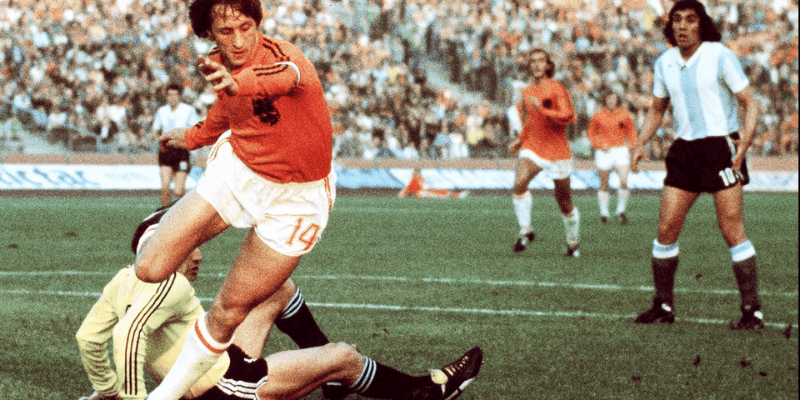
In 1973, Cruyff made a high-profile transfer to FC Barcelona, setting a then–world record fee. His arrival in Catalonia transformed both club and legend:
- He became an instant idol by scoring and orchestrating in big games—including a famous 5–0 victory over Real Madrid at the Bernabéu.
- In league matches alone, he played 143 times, scoring 48 goals during his initial Barcelona stint.
- Beyond league stats, in all competitions his tally rises considerably with assists and presence considered.
- He helped Barcelona win La Liga (1973–74) and later the Copa del Rey (1977–78).
- His vision, technique, and understanding of space enriched Barca’s style—and planted seeds for what would become the Catalan club’s long-term identity.
Barcelona was not just a stop in his career; it became a permanent part of his legacy, intertwined with his philosophy and later coaching work.
American adventures: Los Angeles Aztecs & Washington Diplomats (1979–1981)
After nearly quitting football in 1978, financial troubles pushed Cruyff back into competition—but this time across the Atlantic.
Los Angeles Aztecs (1979)
- Cruyff signed for the Los Angeles Aztecs of the North American Soccer League for the 1979 season.
- He appeared in 22 league matches, scoring 14 goals.
- His flair in LA earned him the NASL MVP (Most Valuable Player) award and showed that even in his 30s, he remained a lethal presence.
Washington Diplomats (1980–1981)
- He then moved to the Washington Diplomats, where he played 29 league games, netting 12 goals (in his first full spell).
- Later in 1981, he briefly returned to the Diplomats for additional matches.
In the U.S., he brought European poise to a league still in its developmental stage—raising standards of play, generating fan interest, and also expanding his own understanding of the game globally.
Levante (loan, 1981)
During 1981, Cruyff had a brief loan spell to Levante UD in Spain’s Segunda División:
- He made 10 appearances, scoring 2 goals.
- This move was an attempt to stay match-fit and maintain momentum after switching between U.S. clubs and contemplating his next steps.
- His time there was short and less impactful compared to his achievements at Ajax or Barcelona.
Return to Ajax (1981–1983)
After the Levante interlude, Cruyff returned to Ajax—first as a “technical adviser,” then as a registered player:
-, he made 36 league appearances and scored 14 goals in his second Ajax spell.
- He contributed to Ajax winning the Eredivisie in both 1981–82 and 1982–83, and also lifted the KNVB Cup in 1983.
- He famously executed a two-man penalty move in a match vs. Helmond Sport, where he nudged the ball sideways to his teammate and then tapped it back—emblematic of his creativity.
This return to his boyhood club brought his playing career full circle, reaffirming his bond with Ajax.
Feyenoord (1983–1984)
In the final chapter of his club playing career, Cruyff made a surprising move to Feyenoord, Ajax’s fierce rival:
- He played 33 league games, scoring 11 goals in his one season there.
- Despite his advanced years, he helped Feyenoord secure the Eredivisie title and the KNVB Cup in 1983–84—achieving a domestic double.
- His presence elevated Feyenoord’s stature that season and added drama to the Dutch football narrative by seeing Cruyff wear the shirt of a rival.
After the 1983–84 season, Cruyff hung up his boots and embarked on his legendary managerial path.
International stage: Netherlands national team (1966–1977)
While not a club, Cruyff’s national team tenure is vital to any overview of where he played:
- He earned 48 caps for the Netherlands, scoring 33 goals.
- He was the driving force behind the Dutch side reaching the final of the 1974 FIFA World Cup, where he won the Golden Ball as tournament best player, though the Netherlands fell 2–1 to West Germany.
- He also played a part in UEFA European Championship tournaments (e.g. third place at Euro ’76).
- Notably, every time he scored for the Netherlands, the team never lost in that match.
His international influence elevated both Dutch football and his personal brand as a visionary midfielder-forward hybrid.
Quick summary: All clubs he played for
Here’s a consolidated look at the teams Johan Cruyff played for over his career (in chronological order):
- Ajax (youth: 1957–1964)
- Ajax (senior: 1964–1973)
- Barcelona (1973–1978)
- Los Angeles Aztecs (1979)
- Washington Diplomats (1980–1981)
- Levante (loan in 1981)
- Ajax (second spell: 1981–1983)
- Feyenoord (1983–1984)
- Netherlands national team (1966–1977)
At each stop, his presence was unmistakable—whether in shaping club identity, lifting trophies, or influencing footballing ideas.
Impact and legacy across his clubs
When you traverse Cruyff’s journey through those teams, some patterns stand out:
- At Ajax, he found the perfect incubator for Total Football, breaking records and setting standards.
- At Barcelona, he became more than a player—he became a cultural and tactical force, planting the DNA that later defined “Barça style.”
- In the U.S., his fame and flair helped the NASL gain credibility and global interest.
- His return to Ajax and final phase at Feyenoord showed that even at sunset, he could influence outcomes and carry weight.
- Internationally, he symbolized the Netherlands’ golden era and gave them a style to rally behind.
His club transitions also mirror his philosophy: move into spaces, break boundaries, adapt—but always lead.
Why knowing johan cruyff teams played for matters
For fans, historians, or aspiring coaches, tracing the list of teams he played for is more than bookkeeping. It’s a map of influence:
- Each club shows how his style evolved, how different leagues received his approach, and how he adjusted across cultures.
- The transitions also tell a story of football’s globalization:.
- Knowing where Cruyff played gives context to how his managerial philosophy later took root in places like Ajax and Barcelona.
For SEO-seeking fans, the keyword johan cruyff teams played for signals a thirst for verifying facts, connecting eras, and tracing lineage in football heritage.
Final Thoughts
Johan Cruyff teams played for is not just a checklist of clubs—it’s the story of how a football revolutionary moved across leagues, left mark after mark, and rewrote the game at each step. From Ajax’s youth academy to Barcelona’s tactical rebirth,, feel free to explore DaoKick’s companion articles on Cruyff’s managerial legacy, his tactics and philosophy, or his greatest matches. And if you want a visual timeline or match-by-match breakdown of his club goals, I’m ready to build that next.
